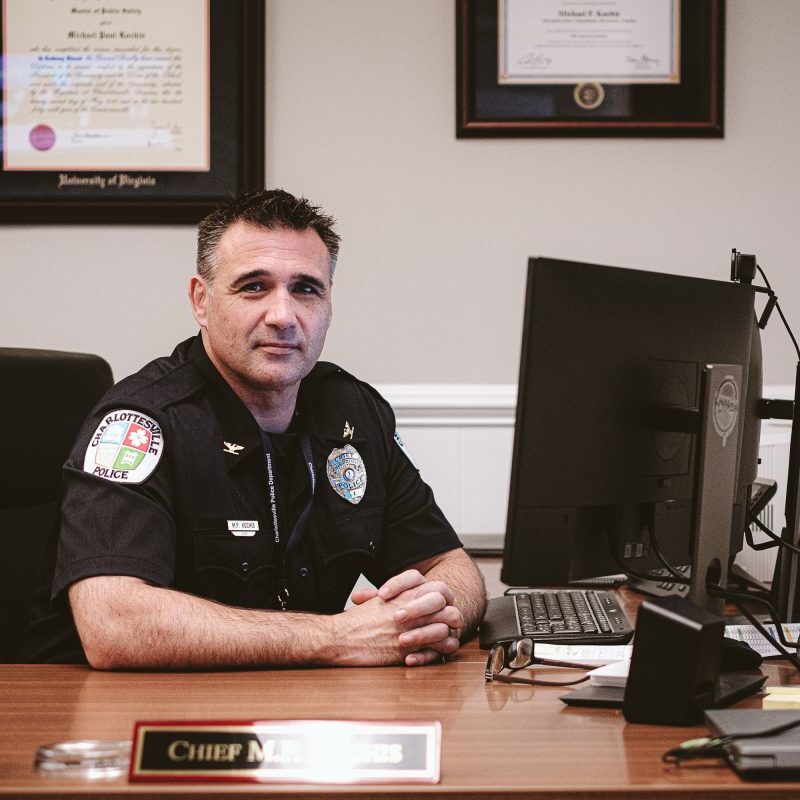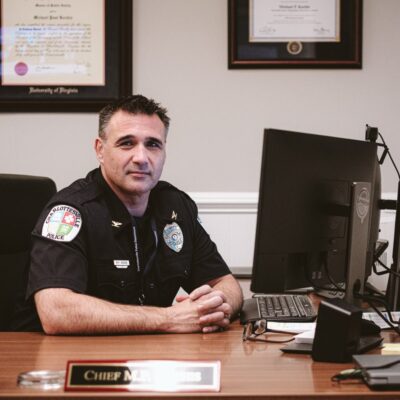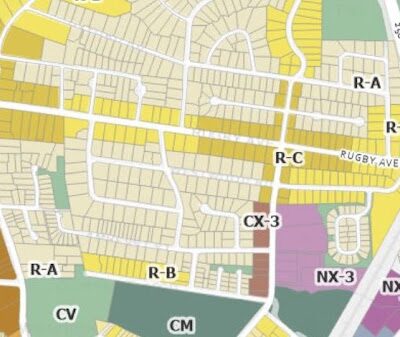Viewers aren’t given a title or theme for this year’s faculty show at Piedmont Virginia Community College, and with 10 different artists united only by the fact that they all teach there, one wouldn’t expect to find much in common. But this year the works—from Rebekah Wostrel’s monotone porcelain with small moments of ornamentation to Mark Edwards’s straight-forward yet deliberately awkward photographs—convey a united interest in various endings: of trips, of reality, of life.
|
PVCC’s faculty art show is just a hop, skip and jump away. Take a look at works like Rob Tarbell’s “Smoke Rabbit 8” through January 20. |
Rob Tarbell’s works, which are generating increasing interest, are the most compelling of the show. His sculpture “Gibbering Hare,” a small, cream-colored statue made of porcelain and resin, has clear origins as an adorably anthropomorphic stuffed animal. The hare is standing on its hind legs with one ear up and one ear down, gesturing emphatically as it carries on. But in this season of “The Velveteen Rabbit,” Tarbell makes a different point about death and commemoration. The hollow eyes and the rigidity of the material take this bunny away from the cuddly and into the funereal.
Tarbell also has a series of 20 images, “A Warren of Rabbits,” made by alighting objects and allowing the smoke to settle on paper. (Let’s not try this at home, kids!) The animals emerge out of dark, swirly outlines, and the element of chance provided from the smoke allows details, shading and shape to rise and fall. The repetition of form suggests Tarbell’s obsession with the mastery of both this interesting technique—smoke marks are usually a sign of damage rather than of structure—and this animal, which appears in many folklore traditions as a mediator between one world and the next.
Beryl Solla’s two digital prints play nicely off of Tarbell’s rabbits. Solla’s modern method combines historical art elements, like the tiled floors of Dutch interiors, and exuberant flowers, with a central black space, empty except for the text, “Space Available,” or, in “I Have Nothing to Say,” containing a skeleton with skulls for hands who has empty cartoon bubbles emerging from the head. Like Tarbell, Solla toys with destruction and death, reminding us that we will one day be surrounded by flowers and have nothing to say ourselves.
Across the Dickinson building, George Andrews’ dynamic abstract paintings, “Traffic” and “Guillotine,” contrast strong, dark lines with oddly delicate explosions of color, capturing the movement and colors of traffic on a sodium-lit night, and the horizontal motion of a guillotine across a vertical figure. Their immediate force dominates the gallery, while two mixed-media installations by the environmentally responsible artist Jeremy Taylor across the hall offer a calmer approach. “The Holy Mountain” offers a collection of closely framed images that contemplate the fading of time. “Salus,” a wooden structure with video set on the floor with a fanning of yarn reaching for the ceiling, delicately suggests the opposing forces of earth and sky, centering and soaring. Perhaps it is this work, named for the Roman goddess of health and prosperity, that offers a final, defiantly optimistic word on the end of 2009.






